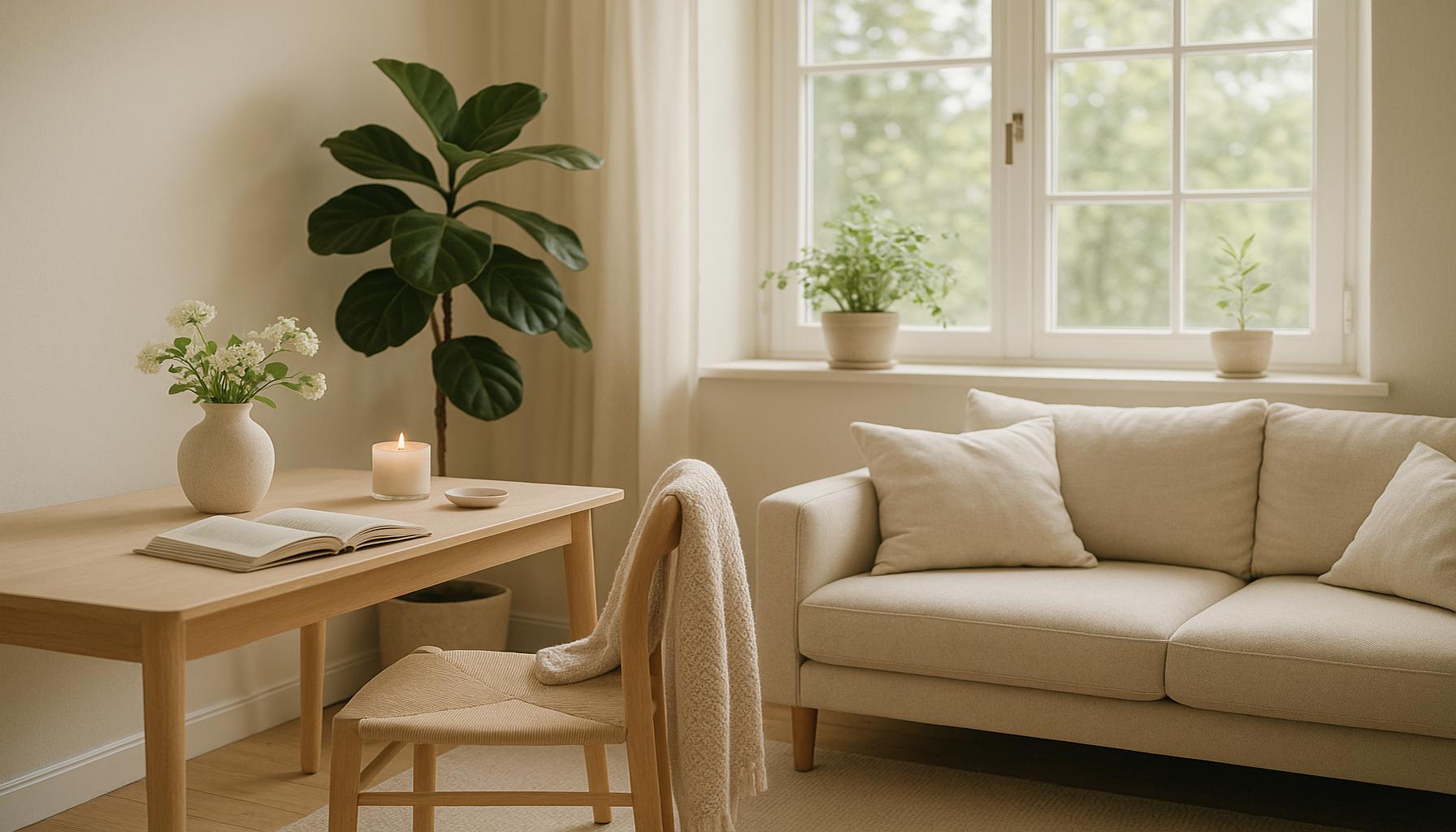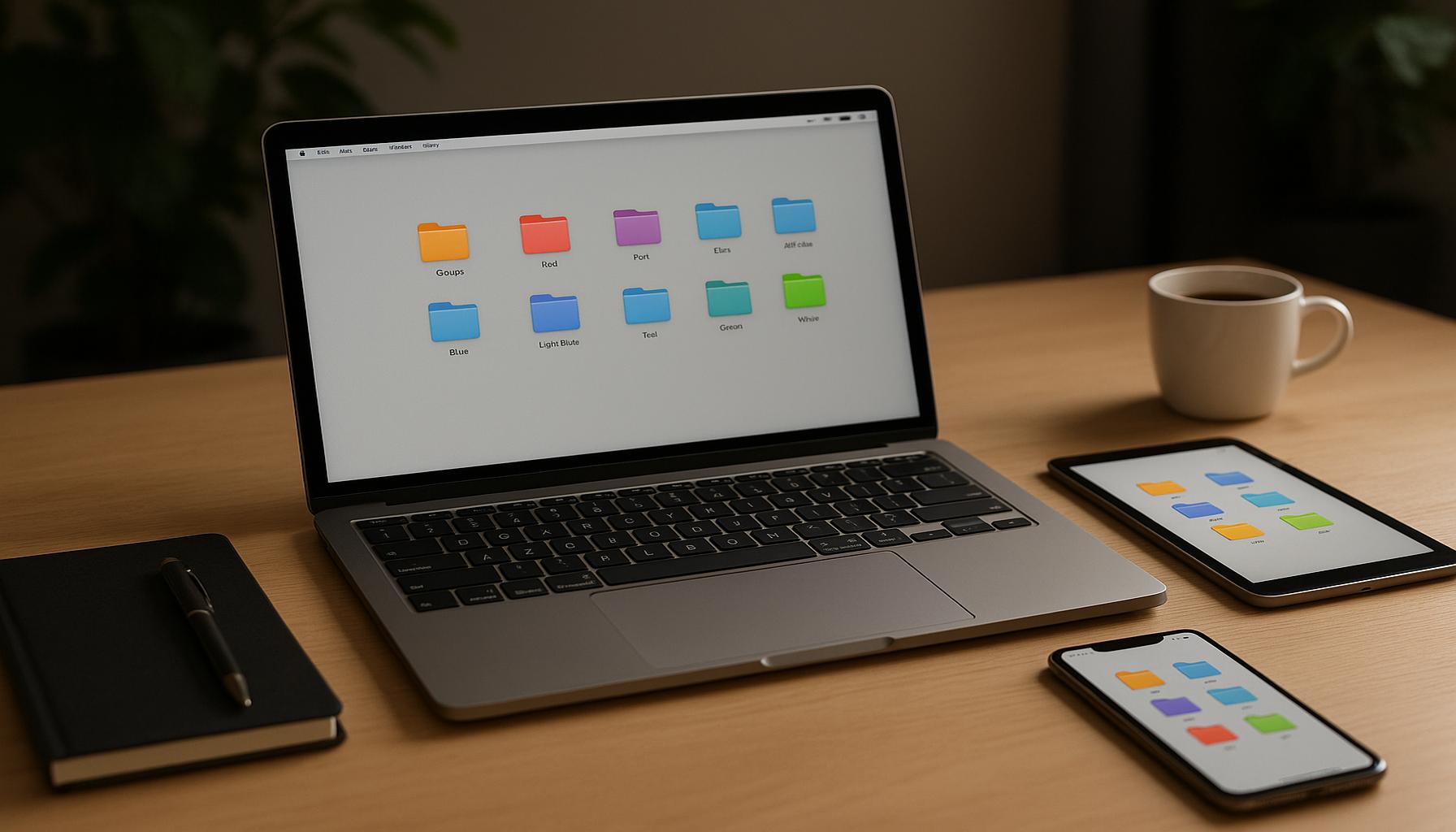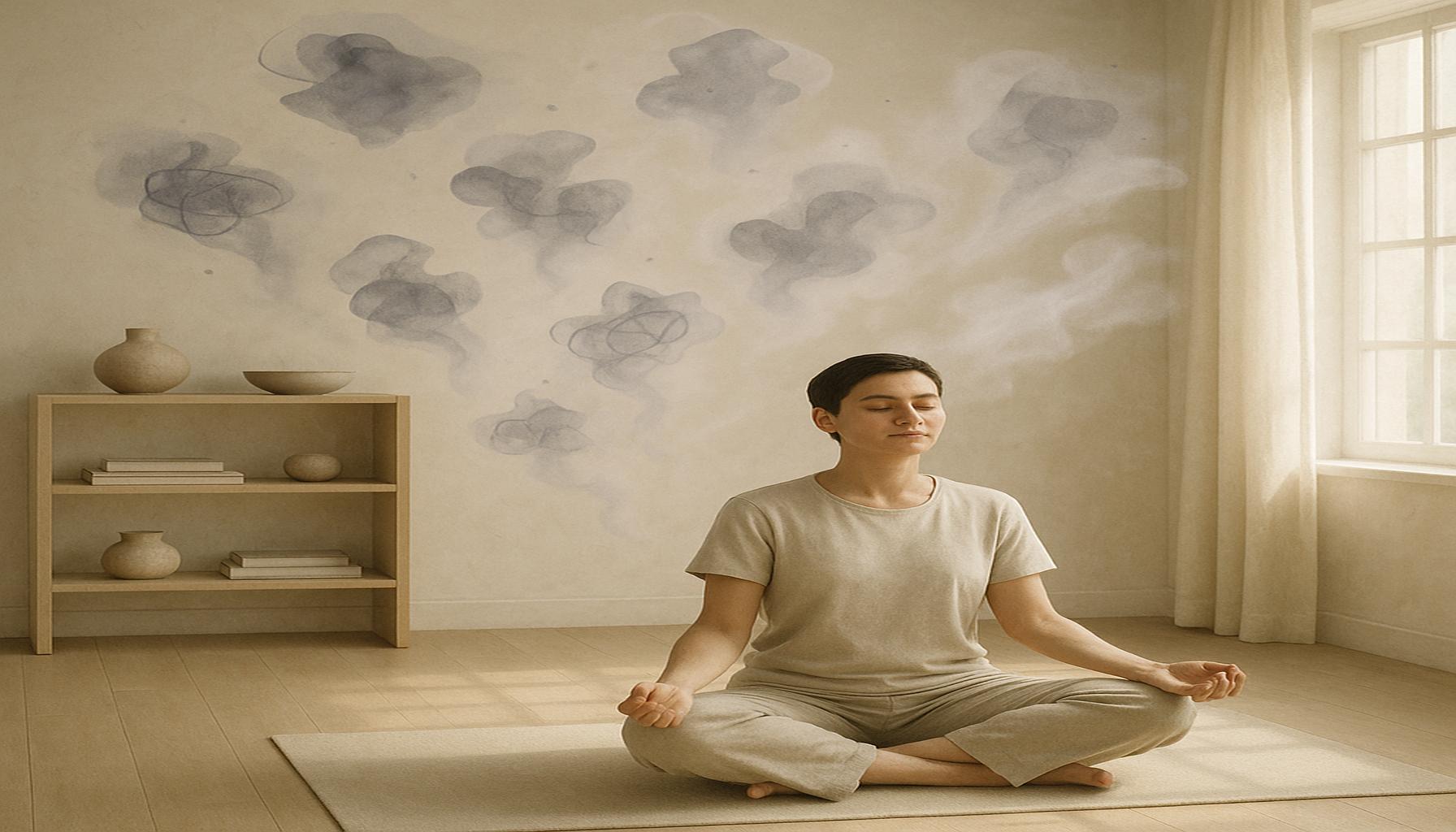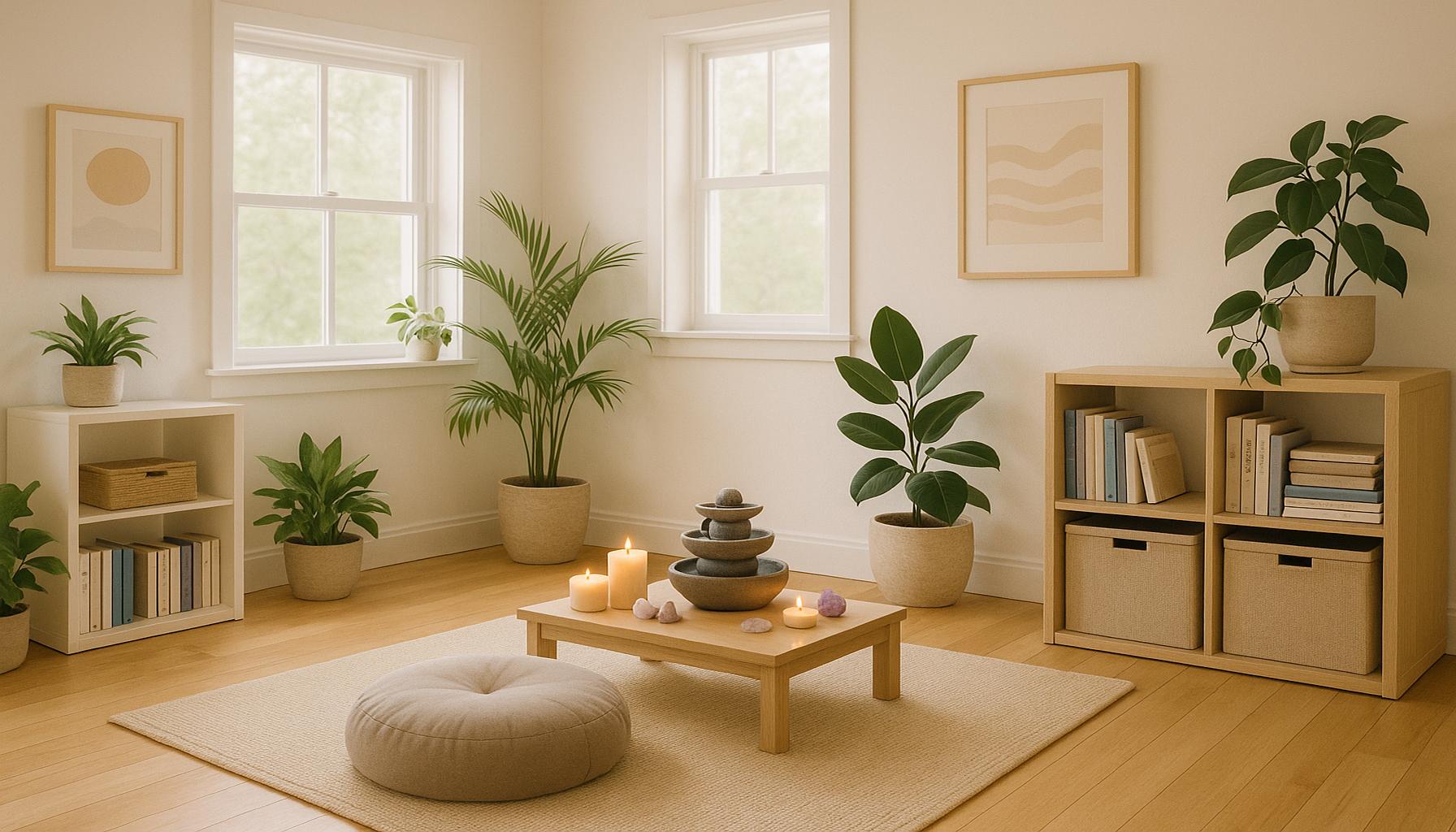Sensory Decluttering: Simplifying the Environment for Positive Stimulation and Well-Being

Understanding Sensory Decluttering
As modern life accelerates, the barrage of stimuli from our surroundings can lead to a state of cognitive overwhelm. Our homes, workplaces, and even public spaces are filled with visual clutter, persistent sounds, and tactile discomforts. This overload can diminish focus and heighten anxiety levels, setting the stage for a compromised quality of life. To combat this issue, sensory decluttering advocates for the creation of spaces that encourage serenity and mental clarity through deliberate design choices.
Defining Sensory Decluttering
At its core, sensory decluttering refers to a conscious effort to streamline and simplify the sensory inputs in our environment. By selectively enhancing our surroundings and reducing distractions, we create a backdrop conducive to mental calmness and productivity. Let’s explore the essential components that contribute to crafting a harmonized environment:
- Visual simplicity: Clutter can be visually overwhelming. Organizing spaces by reducing unnecessary decorative items can enhance calmness. For example, consider limiting surfaces to a few meaningful and aesthetically pleasing objects rather than a myriad of knick-knacks that demand attention.
- Auditory peace: Noise pollution is a growing concern in urban environments, where the incessant sounds of traffic and bustling crowds can be distracting. Implementing noise-canceling headphones for work or using natural soundscapes, such as gentle water sounds, can bring peace to a chaotic auditory experience.
- Tactile balance: The physical sensations we encounter in our daily lives matter. Choose materials for furniture and decor that promote comfort, such as soft fabrics for upholstery instead of harsh or irritating textures, which can subconsciously heighten stress levels.
The Benefits of Sensory Decluttering
Research supports the advantages of sensory decluttering, highlighting its positive impact on mental health. A well-organized environment has been linked to improved concentration, enabling individuals to work more efficiently. Moreover, reducing sensory overload can significantly lower anxiety, as a calm space allows the mind to unwind. For instance, a study by the Journal of Environmental Psychology revealed that individuals in decluttered, organized spaces experienced heightened feelings of tranquility and control.
Consider the role your personal space plays in your daily life. How do various elements within your environment influence your mood and productivity? By intentionally engaging in sensory decluttering, individuals can embark on a transformative journey toward greater well-being and fulfillment.
In a world where distractions are ever-present, the pursuit of a balanced, serene environment is not just beneficial—it’s essential for a productive life. Are you prepared to transform your surroundings for the better? The next step is to assess your own living or working space and identify areas ripe for positive change.

DISCOVER MORE: Click here to learn about prioritizing what truly matters</
Strategies for Effective Sensory Decluttering
Embarking on the path of sensory decluttering involves a series of practical strategies aimed at transforming one’s environment into a haven of tranquility. Whether at home or in the workplace, clarity can be achieved through thoughtful adjustments to our spatial and sensory experiences. The following methods are essential to creating a balanced atmosphere where positive stimulation flourishes:
- Prioritize Minimalism: Begin by embracing minimalism—an approach that emphasizes quality over quantity. This doesn’t mean stripping your living space bare; rather, it invites individuals to carefully select items that contribute to their overall well-being. A minimalist approach creates spaces that breathe, allowing individuals to focus on what truly matters.
- Incorporate Natural Elements: Nature has a peaceful and restorative quality, which makes incorporating natural elements into your surroundings incredibly beneficial. Houseplants, natural lighting, and organic materials can enhance your environment. Studies have shown that exposure to nature can decrease stress levels and improve mood, making it a crucial component of sensory decluttering.
- Establish Designated Zones: Increases in sensory congestion often result from the overlap of different activities within a space. Establishing designated zones for specific activities—work, relaxation, or leisure—can help define how these spaces are used. This demarcation fosters a sense of order and purpose, enhancing productivity while minimizing distractions.
- Utilize Color Psychology: Color influences mood and perception significantly. When planning your environment, choose color palettes that evoke a sense of calm and clarity. Soft blues, muted greens, and warm neutrals can create a soothing backdrop that invites relaxation. Research in color psychology indicates that these hues can promote feelings of tranquility and focus.
Reflecting on the walkways of your home or office can reveal underlying sources of sensory overload. Perhaps the bright colors on the walls are competing for attention or the myriad of sounds from technology is distracting you from your tasks. A conscious effort to implement sensory decluttering methods can yield substantial benefits.
Furthermore, we also encourage personal reflection on habits that may contribute to sensory overload. For instance, assessing your screen time can reveal how digital devices amplify sensory distractions, particularly in a work-from-home environment. Setting boundaries on the use of technology can help restore balance and harmony in one’s daily life.
As you embark on this journey of sensory decluttering, remember to be patient with yourself. Change takes time, and nurturing your environment to reflect peace is an ongoing process. By implementing these strategies, you will not only enhance your physical surroundings but foster a greater sense of well-being that permeates all aspects of your life.
| Advantage | Description |
|---|---|
| Increased Focus | Minimizing distractions leads to heightened concentration abilities, allowing individuals to engage deeply in tasks without interruptions. |
| Enhanced Emotional Well-Being | A simpler environment promotes a sense of calm, reducing anxiety and fostering a more positive mental state. |
The concept of **sensory decluttering** revolves around creating a harmonious space that fosters positive stimulation and overall well-being. Research has indicated that our surroundings significantly influence our mental state. Therefore, by adopting **minimalistic design principles**, individuals can achieve not only aesthetic satisfaction but also psychological comfort. For instance, reducing clutter can lead to less cognitive overload, allowing for a clearer thought process. Incorporating elements like natural light and greenery can further enhance this environment by promoting relaxation and joy. These adjustments, rooted in sensory decluttering, are not just trends; they represent a lifestyle choice aimed at enhancing life quality. While diving deeper into this journey of simplification, individuals can discover a renewed appreciation for their space and its influence on their daily lives.
DISCOVER MORE: Click here to enhance your organization skills
Enhancing Sensory Experience Through Decluttering
Transitioning from a chaotic environment to one that promotes well-being requires not only the organization of physical spaces but also an understanding of how sensory elements can either hinder or enhance our daily experiences. Engaging with our senses allows us to connect more deeply with our environment. Here are additional strategies to consider, focusing on optimizing sensory experiences:
- Sound Management: Noise pollution is a significant contributor to sensory overload, particularly in urban settings. Introducing sound-absorbing materials such as rugs, curtains, and upholstered furniture can mitigate ambient noise. Alternatively, consider playing calming sounds, such as gentle music or nature recordings, to create an auditory landscape conducive to relaxation and focus. According to research from the University of California, Berkeley, consistent exposure to pleasant sounds can positively influence mental health and productivity.
- Textural Variety: The textures in your environment can significantly affect your emotional state. Striking a balance between different textures—soft throws, smooth surfaces, or natural fibers—can create a tactile harmony that promotes comfort. Experimenting with various materials can also unveil new sensations that enhance your engagement with the space. For example, sensory-rich spaces in schools are shown to improve students’ focus and creativity, showcasing the profound impact of texture on sensory experience.
- Aromatic Influences: Odors are powerful triggers for memory and emotion. Introducing pleasant scents through essential oils, candles, or fresh flowers can transform your surroundings. Scents like lavender and citrus have been linked to reduced stress levels and increased feelings of happiness. A study published in the Journal of Alternative and Complementary Medicine found that aromatherapy could indeed lead to significant improvements in emotional wellness, reinforcing the notion that our olfactory environment plays a crucial role in sensory decluttering.
- Mindful Incorporation of Technology: In a digitally-driven society, it’s essential to strike a balance with technology. Mindfulness practices, such as ‘digital detox’ periods or unchecking notifications, can help reduce sensory clutter. Creating tech-free zones or times, especially in common areas of the home, encourages emotional connection and boosts overall well-being. According to a report from the Pew Research Center, nearly 70% of American adults feel overwhelmed by the constant connectivity, further emphasizing the need to establish boundaries.
Being aware of what’s around you and how it impacts your senses can lead to impactful changes in your mood and productivity levels. Challenge yourself to conduct a sensory audit of your spaces: what visual distractions vie for your attention? Are the smells inviting or overwhelming? Engaging with these elements provides invaluable insights into your sensory landscape and offers opportunities for meaningful decluttering.
Moreover, learning to embrace silence can be transformative. In a world often saturated with noise and distractions, carving out moments of quiet can not only serve as a refuge but also foster deeper thought and creativity. Emphasizing quiet areas in your environment encourages mental clarity and offers the elusive stillness many individuals seek amidst their hectic lives.
Ultimately, achieving sensory decluttering is an ongoing journey that greatly influences overall well-being. Cultivating awareness of the sensory elements in your life empowers you to make intentional choices that will elevate your emotional landscape and create an environment that supports your mental health.
DIVE DEEPER: Click here to discover how minimalism can transform your decision-making
Conclusion
In an age where overstimulation is the norm, sensory decluttering emerges as a vital practice for fostering well-being and enhancing our overall quality of life. By effectively simplifying our environments, we create spaces that do not just house our belongings but nurture our senses and promote a state of mental clarity. From minimizing visual distractions to harnessing the power of sound, touch, and scent, each sensory element contributes to how we experience our daily lives.
As we’ve explored, strategies such as integrating calming sounds, diversifying textures, and utilizing pleasant aromas can significantly transform our surroundings. Furthermore, adopting a mindful approach to technology usage can alleviate the overwhelming noise that often leads to sensory overload. The delicate interplay between these aspects illustrates that sensory decluttering isn’t merely a one-time task but an ongoing journey toward a more harmonious existence.
To derive the full benefits of sensory decluttering, individuals should regularly assess their environments and make conscious changes to optimize sensory experiences. By grounding ourselves in what we see, hear, touch, and smell, we cultivate an awareness that allows for moments of tranquility within our hectic lives. As evidence increasingly supports the psychological benefits of a thoughtfully curated environment, we are encouraged to embark on our own sensory audits and reclaim our personal spaces. Prioritizing well-being through sensory awareness can lead to lasting improvements in mental health, emotional regulation, and overall life satisfaction. Therefore, let us embrace this transformational practice, not just as a trend, but as a necessary step towards a more peaceful and enriching life.


